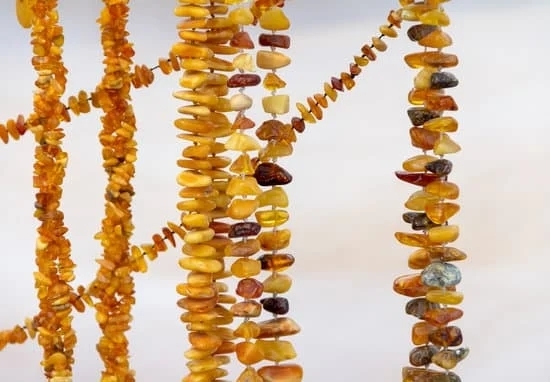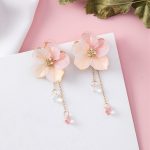Jewelry trend forecasting is an essential tool in the fashion and retail industries. It involves predicting the upcoming trends in jewelry that will be popular and fashionable. By using this data, designers have a better understanding of what materials, shapes, designs, stones, and colors customers will be interested in wearing. It also allows companies to plan their future collections so they are always ahead of the competition with stylish pieces that meet consumer needs and desires.
Trend forecasting analysts look at consumer behavior, analyze market data and research lifestyle changes occurring across cultures to predict fortunes for jewelry industry in the near future. Other variables considered for trend prediction include media reports by celebrity magazines or weekly tabloids of what styles are being hit among socialites as well as current fashion shows or television programs highlighting jewellery trends around the globe.
Some forms of trend prediction use technology such as artificial intelligence to scan millions of online sources from different countries to discover global trends not seen previously. In addition, evidence-based analysis on the sales history gives useful insights on areas where there is a higher demand and need more investment towards jewelry production.
Companies can take advantage of trend forecasting efforts so they can design pieces that reflect current changing tastes while anticipating where those tastes may lead in terms of future successes or failures. Designers use this data to create pieces that have higher potentials for success due to market demand and staying on top of current trends.
After new pieces are manufactured or developed, jewelry trend forecasters update their predicted patterns based off updated customer interests from sales records/reports coming from retailers or stores both online or offline. As long as there is high demand for innovative style samples suited to people’s values and preferences, jewelry trend forecasting gains even more importance than ever before.
Benefits of Jewelry Trend Forecasting
Jewelry trend forecasting can play an important role in the success of a jewelry apparel business. By being able to anticipate trends, businesses are able to plan ahead and stay a step ahead of their competition while also providing their customers with the latest and hottest items.
Jewelry trend forecasting assists businesses in capitalizing on consumer buying habits by allowing them to be proactive and focus on what is most likely to appeal to their target demographic. Thus, it serves as an essential tool for businesses looking to remain at the forefront of the industry and meet consumer demands.
Jewelry trend forecasting optimizes operation times and reduces room for costly trial-and-error processes. Companies can utilize trends data to create well-planned stock strategies, reducing unnecessary expenses due to overstocking or inadequate product lines that have been incorrectly forecasted before release date.
Market research teams often rely heavily on trends analysis for predictions on upcoming holidays or more attention grabbing product ranges such as customized jewelry pieces or stacking sets. This way companies become better prepared for guiding supply chain operations efficiently and ensuring faster turnaround times when responding rapidly changing customer needs.
Finally, utilizing jewelry trend forecasting is integral in gaining insights into fast evolving customer preferences that enable stakeholders within the fashion industry to translate desired pieces accordingly into successful designs both creatively and commercially. Trend forecasters make detailed predictions concerning what materials, shapes or finishes will dominate specific fashion seasons as well as which color palates will be most favored among consumers based on prevailing beauty codes associated with specific occasions such as weddings or business gala events etc.
They simultaneously set inspiration paths for jewelry designers by showcase designers have carefully examined beforehand during extensive market analysis sessions allowing them accurately translate prevailing sociocultural influences into iconic runway looks carrying potential of driving sales unexpectedly high amongst luxury clientèle demographics.
What Forecasting Methods do Jewelry Designers Use?
Jewelry designers use various advanced forecasting methods to make accurate predictions of the fashion trends in the coming season. Several sophisticated methods are used, including trend analysis, historical tracking, and consumer forecasting. Trend Analysis is the most widely used form of jewelry trend forecasting and involves studying changes in customer preferences over time.
Historical Tracking helps to identify seasonal trends and commonly looks at customer buying habits from year to year as well as identifying new popular products across multiple market segments. Consumer Forecasting is a type of predictive analytics that uses customer surveys and data gathered through research such as interviews or lifestyle questionnaires to measure customer sentiment and intent towards certain styles or products.
When it comes to jewelry trends, Color Theory has become an increasingly important tool for designers. This theory utilizes rational color combinations such as complementary colors, analogous colors, monochromatic color combinations, triadic colors, and split-complementary colors that can be implemented in a variety of ways when deciding on which hues will appeal most to consumers that season.
In addition, jewelry designers utilize visual merchandising techniques like window displays or mannequin styling with their pieces in order to create an inviting environment for customers that encourages purchase decisions based on these color schemes.
The application of emerging trends can also have a huge impact on jewelry design for any given season. Staying abreast of current buzzwords related to both fashion and technology enables apparel companies to stay ahead of the competition by staying up-to-date with what’s trending.
Jewelry nods toward chic minimalism using raw material textures might be seen on runways during one season while a streetwear athleisure look could be seen dominating conversation the next making staying aware key in designing runway ready pieces each season that consumers find desirable. By combining all these tactics jewelry designers are able to hone their foresight into understanding what will dominate upcoming collections so they won’t fall behind competitors come launch day.
Breaking Down the Process of Jewelry Trend Forecasting
Jewelry trend forecasting is the process of using data and insights to predict future trends in jewelry. It is used by retailers, buyers, manufacturers, and designers to stock items that reflect the current taste of consumers.
It can be used to understand customer preferences and styles, develop collections that appeal to customers, predict demand for certain items, and create effective marketing strategies. It is important for businesses to stay on top of emerging trends so they can make timely adjustments to their product lines.
In order to accurately forecast upcoming jewelry trends, businesses must start by researching existing markets and consumer behavior patterns. This data can help identify what’s popular right now as well as any upcoming changes in style or preference among target demographics.
This research can uncover new trend opportunities or confirm whether current trends are continuing into the near future. Companies often use this data along with economic news and other indicators to create an overall picture of what trends are likely at any given time.
Additionally, established relationships between buyers, manufacturers, retailers can aid in jewelry trend forecasting by providing access to exclusive information regarding upcoming collections. Information like this allows companies to stay one step ahead of others who may be researching the same information independently.
Also useful in jewelry trend forecasting are industry events where buyers have a chance to discover the newest products being showcased by various designers and brands. Keeping up with developments within the industry gives new trends legitimacy and helps buyers source materials faster than those that rely solely on proprietary research methods would usually take much longer.
Lastly, utilizing technology is an effective way for companies looking into jewelry trend forecasting because it allows them to quickly collect qualitative data from social media platforms such as Instagram or Pinterest which provide invaluable insight into customer behavior related directly or indirectly to jewelry consumption. Technology also helps deliver information faster than ever before allowing for precise decision-making related to purchasing decisions about following current or future fashion trends in an ever-changing industry environment.
Identifying Trends in 2021 and Beyond
Jewelry trend forecasting is an important part of the fashion industry. As new trends evolve over time, jewelry has to stay ahead of the game in order to remain a top choice for consumers. In 2021, many people are turning towards delicate designs and creative use of materials.
This has led to an influx of minimalist pieces that are both stylish and affordable. Other popular styles that are being forecasted include the geometric shapes of art deco-inspired designs, clean lines, and artistic natural elements such as gemstones and minerals.
One trend that is becoming increasingly popular within today’s jewelry market is sustainability. Consumers are wanting items made with high quality diamonds, metals, and stones sourced from sustainable sources. Companies are recognizing this growing demand and providing sustainable options such as recycled gold or lab grown diamonds when creating their products. Consumers want to make sure they’re purchasing pieces that meet their ethical standards while still looking beautiful which further reflects the rise in sustainable jewelry trends worldwide.
Another major trend emerging in the world of jewelry is customization. In recent years there has been a surge in customers requesting personalized items such as monogrammed necklaces or customized wedding bands.
Many companies have created systems allowing customers to design their own item from start to finish using 3D modeling technology; these practices allow for easy customization for any type of accessory desired. As brands recognize this trend more and more features will become available geared towards helping customers design something one-of-a-kind specifically tailored towards them.
Overall, predicting the jewelry landscape in 2021 requires consideration from new materials, colors, shapes and more – – all factors that drive innovation within the industry to provide fashionable yet practical accessories for consumers all around the world. With so much attention placed on sustainable practices now more than ever before, it’s likely these trends will continue into 2022 and beyond as well.
Factors to Consider When Forecasting Jewelry Trends
Jewelry trend forecasting is an intricate process that takes into account multiple factors. Jewelry is a statement piece and often reflects the mood of the time. Knowing what is trending and what will be expected to trend in the future helps businesses stay ahead of fashion trends while maintaining their own signatures. In order to gain insight on what’s popular, the jewelry industry needs to take into account the actual consumer, seasonal trends, and emerging markets.
The consumer must always be at the center of focus when forecasting upcoming jewelry trends as it is their behavior and fluctuating tastes that drive new trends. By understanding consumer habits brands can interpret customer needs and desires in order to anticipate changing behaviors and interests before they happen.
It’s important for jewelry companies to stay in tune with what people are buying, how they’re using them, why they purchase them,and in what quantities do customers buy them in order to identify up-and-coming trends.
Identifying seasonal trends is also key when crafting accurate forecasts for jewelry trends. Jewelry should sync up with fashion cycles fans fuel certain looks depending on their obligation level which changes throughout the year with external engrossing such as summer or winter seasons or even occasions like Valentine’s day.
Early spring signals new beginnings as women look for a change up in their accessories while summer usually calls for bolder pieces reflecting society’s generally easier moods towards life around this time; autumn brings warmer tones onto centre stage; and cool blue hues come back into play again late-autumn/winter season. If a company can identify these influencers early and design pieces that cater too essential, they have hit a home run.
Finally observing emergent markets lets Jewelers know exactly where fashion tides have turned or if there is something brewing beneath the surface ready to sweep across entire countries overnight.
With digital platforms being progressively more globalized, keeping an eye out on other countries possible styles provides brands with knowledge about millions of potential buyers who may influence future trends dramatically say non for example USA could be enjoying necklaces specifically featuring one colour palette but now Japanese consumers may prefer accessories with totally different colour combinations which would then popularize acrosswestern nations henceforth;through specific market research companies ensure their jewelry products appeal tot those local standards.
Tools for Successfully Forecasting Jewelry Trends
When it comes to jewelry trend forecasting, success comes from having the right tools in place. The ever-changing fashion industry and markets can be difficult to predict and make buying decisions based on. As a successful jewelry retailer, having a clear understanding of insight which drives trends is essential for forecasting future purchases. We’ve outlined some great tools which can help guide decision making when it comes to jewelry trend forecasting:
Data Analyzing Platforms
Data analyzing platforms are an invaluable asset for retailers looking to stay on top of the latest trends in jewelry design. By using these platforms, you can gain insights into customer shopping patterns, preferred product designs and materials, as well as any shifts in demographics due to changes in global trade or evolving industry standards.
Data analysis will also provide important context into fluctuations in pricing and demand – allowing retailers to move quickly on any opportunities which may come up due to tides in the market.
Competitive Market Analysis
To have success with jewelry trend forecasting takes more than just data identifying what customers like; strong competitive analysis capabilities ensures that viewers are taking note of how competitors may be positioning themselves against current trends. Staying aware of what kind of designs other retailers are pushing out can give valuable information on how they are categorizing styles and inform future collections accordingly.
By staying one step ahead with competitive analysis, retail stores can put together marketing campaigns that offer relevant products at competitive prices – ensuring that customers always see something new and cutting edge each time they shop.
Crowdsourcing Tools
In addition to data analyzing and market analysis, many retailers also turn to crowdsourcing platforms as a tool to identify various trends before they become mainstream. This platform allows retailers to connect directly with their customer base by inviting conversations about relevant topics such as design preferences and materials – all without needing staff at physical locations or pop-up shops around the world.
Through organized surveys or instant consumer feedback, marketers accrue valuable insights about what kind of designs drive consumer preferences so that ultimately jewelry buyers have comprehensive market intelligence across regionals and locales – aiding in effective product analyses for successive collections and curation down the line for optimal sales performance.
Conclusion
Jewelry trend forecasting is essential for all business in the jewelry industry. Knowing what trends are up and coming, or what current styles will remain popular, can help a business stay ahead of the market and increase sales. Jewelry by staying ahead of the competition and having in-demand products makes it much easier to maintain long-term success.
Businesses that practice jewelry trend forecasting specialize in analyzing past styles and predicting what new designs will be popular upcoming seasons. They conduct extensive research, looking at international markets and cultures so that they know what kind of products customers will be attracted to in their own country.
By drawing upon these resources businesses can make decisions based on data rather than relying solely on their gut feeling and intuition. Having this type of knowledge helps to ensure that they are investing money into pieces that will sell well when they arrive in stores.
If a business wants to succeed and stay competitive in the jewelry industry, trend forecasting is an invaluable asset as it provides insight into how different types of consumers think. For example, if a company realizes that chunky necklaces are growing more popular they’ll take this information and determine which type of materials would draw buyers best; gold or silver?
What color stones? It provides an idea on what the public wants even before the trends have become mainstream so companies can continue to move forward with new product lines ensuring continued sale growth over time.
Essentially, for any business within the jewelry industry, trend forecasting offers key insight into consumer behavior helping create unique product lines that allow companies to stand out from competitors as well as maintain healthy sales over time. As mentioned earlier, having an understanding of future trends gives businesses a leg up compared to those without taking advantage; making sure companies make sound investments rather than guesswork decisions.

Welcome to my jewelry blog! My name is Sarah and I am the owner of this blog.
I love making jewelry and sharing my creations with others.
So whether you’re someone who loves wearing jewelry yourself or simply enjoys learning about it, be sure to check out my blog for insightful posts on everything related to this exciting topic!





